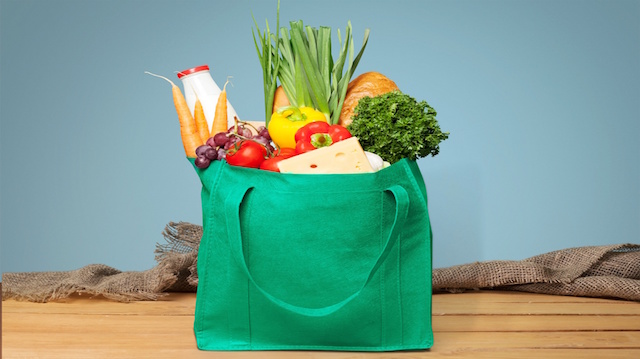
You’ve cleaned out your kitchen cabinets and no longer use plastic storage containers. You emptied your house of plastic dishes. You take your own glass water bottle everywhere you go. Even with these admirable and healthy choices, you are still surrounded by plastic. Each year, Americans dispose of 32 million tons of plastic waste. Not using plastic containers will only make a tiny dent in this excessive waste.
Use these tips to eliminate even more plastic from your life:
Switch to reusable bags
Each year, an estimated 500 billion plastic bags are used. A plastic bag takes over 1,000 years to degrade if it is not recycled. This means we will be drowning in plastic bags in just a few decades. You can help this problem by switching to reusable bags. Take your own bag with you whenever you shop. You can take this even further by switching to reusable produce bags when you visit the grocery store and avoiding all products sold in plastic bags.
Switch to non-packaged purchases
It takes a bit of extra searching, but it is possible to buy many of your groceries and necessities package-free. Some grocery stores across the United States have taken a vow to disallow packaging in their stores, but you can use a similar technique at any store.
The rules are simple: If a package or product is wrapped in plastic, do not purchase it. Look for package-free, glass packages or cardboard packaging instead. Even products like soap and laundry detergent can be found in non-plastic containers.
Shop the bulk bins and use your own reusable containers for a further reduction in packaging and plastic. With enough searching, you can even find hair-care and makeup products sold plastic-free. Some online retailers even have the option of selecting a “no packaging” option.
Say no to plastic takeout
When dining out, ask if you can store your leftovers in your own container. Take a glass or cardboard container along with you for this purpose and avoid the environmental dangers of Styrofoam and other restaurant packaging. As an added bonus, you’ll probably order delivery food less often, which will benefit your waistline in addition to the environment.
Switch to cloth diapers
 Have a baby? Diapers account for about 7.6 billion pounds of waste in the United States each year. It takes about 80,000 pounds of plastic to manufacture disposable diapers for American babies. Cloth diapers can be reused over and over, which means you only have to purchase a total of about 20 diapers for your baby’s entire diaper-wearing years. This not only reduces plastic waste significantly, but it can also be cheaper. Pocket diapers look similar to disposable diapers and are easy to wash and use.
Have a baby? Diapers account for about 7.6 billion pounds of waste in the United States each year. It takes about 80,000 pounds of plastic to manufacture disposable diapers for American babies. Cloth diapers can be reused over and over, which means you only have to purchase a total of about 20 diapers for your baby’s entire diaper-wearing years. This not only reduces plastic waste significantly, but it can also be cheaper. Pocket diapers look similar to disposable diapers and are easy to wash and use.
Rethink your period
Women spend thousands of dollars on disposable tampons and pads, accumulating huge amounts of plastic waste in the process. Many manufacturers have now made reusable menstruation products that make it easy for your periods to be plastic-free. From reusable, washable absorbent pads and underwear to rubber or silicone cups that act similarly to tampons, there are several plastic-free period options to suit any woman’s needs. At the very least, switching to tampons with a cardboard applicator will reduce your plastic footprint.
Get rid of small plastic
When we think of the plastic we use, we think about large plastic containers or plastic bags, but the more you think about it, the more you realize plastic is everywhere. Try packing a lunch without using plastic. It is nearly impossible using standard methods. Try switching to metal lunch containers or wrapping sandwiches in wax paper and placing them in a brown paper bag. Glass containers and jars can be used to store leftovers for transportation to work or school the next day.
Search for plastic in your clothing
If you have any clothes made from man-made fibers, you’re wearing plastic. Slowly switch to only natural fibers to reduce your carbon footprint over time. As an added bonus, most natural fiber clothing lasts longer and wears better than synthetic fibers. Look for hidden plastics in your shoes, accessories and hair products, and eliminate as many of these sources of plastic as well.
These plastic exchanges can take time and definitely take dedication, but reducing your personal use of plastic will improve the environment one small step at a time. You will definitely feel much better about your carbon footprint with these extra efforts that go above and beyond to make a real difference.
—The Alternative Daily
Source:
http://www3.epa.gov/epawaste/nonhaz/municipal/pubs/2012_msw_fs.pdf

